Dark Side of the Ring Season Two Ranked
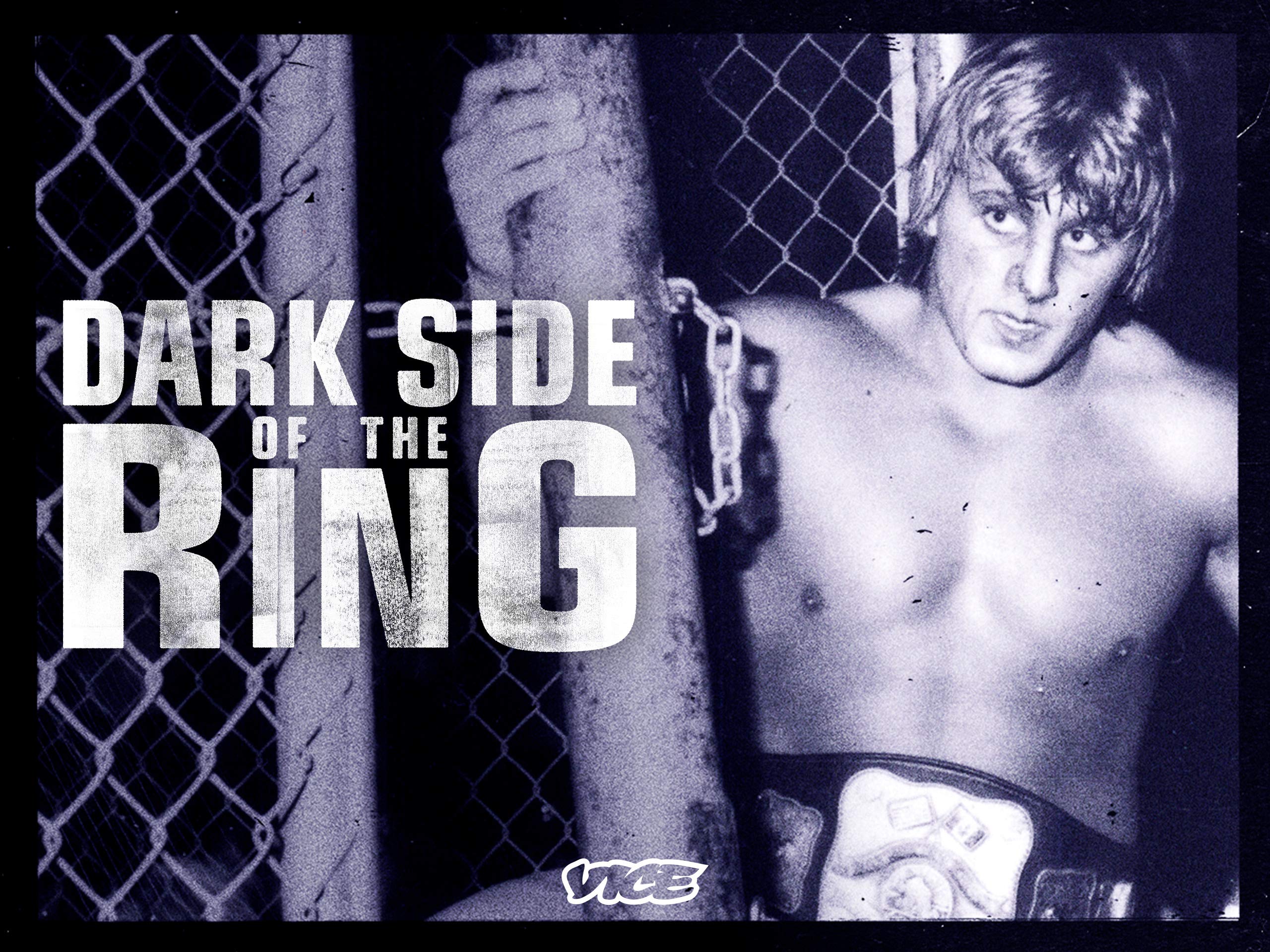
Season Two of Viceland’s Dark Side of the Ring ups the ante with more true tales of some of wrestling’s most gruesome and horrifying events. As shocking as some of its stories are, these ten episodes are not presented as headline-grabbing trash, but instead as honest and emotional examinations of a business that has repeatedly failed its participants and their families. Dark Side of the Ring proves again that its goals are not sensationalist in nature but based on finding justice and closure for victims and shedding light on an exploitative business.
And that’s the bottom line. Here is Dark Side of the Ring Season Two ranked.
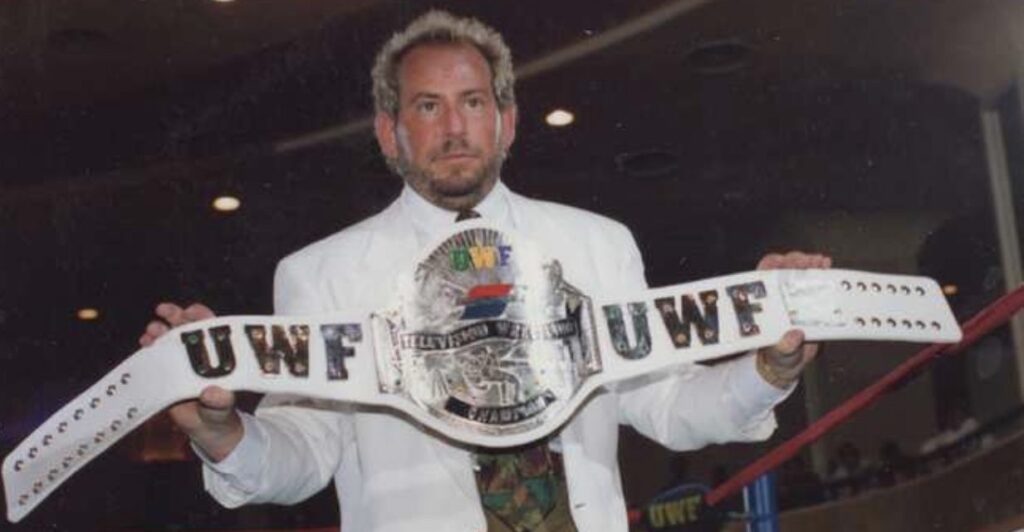
10. Cocaine & Cowboy Boots: The Herb Abrams Story
Growing up in Minnesota and coming into my wrestling fandom in the late-’80s and early-’90s, companies outside the WWF may well not have even existed. If you’d told me there were other wrestling companies scattered throughout the U.S. (and the world), I’m not sure my young mind would have even been capable of understanding what that meant. One such company, the Universal Wrestling Federation, was only around for a few years beginning in 1990, but it would be the antics of its promoter rather than its in-ring action that would propel this fledgling territory into infamy.
The story of Herb Abrams and the UWF is populated not only with some of the biggest names in wrestling, but also with some of the most negligently managed promoting this side of the XFL. Abrams, a wrestling superfan eager to break into the business, started his fledgling company as a means to rival the success of the WWF, but it didn’t take long for things to spiral out of control. In just a few short years, Abrams had blown through an enormous amount of money with bad bookings and worse personal habits. For all his mismanagement and bounced checks, though, those who tell his story remember Abrams with a surprising fondness. His story might be a short-lived one, but it sheds some deserving light on a promotion all but forgotten by those who weren’t there.
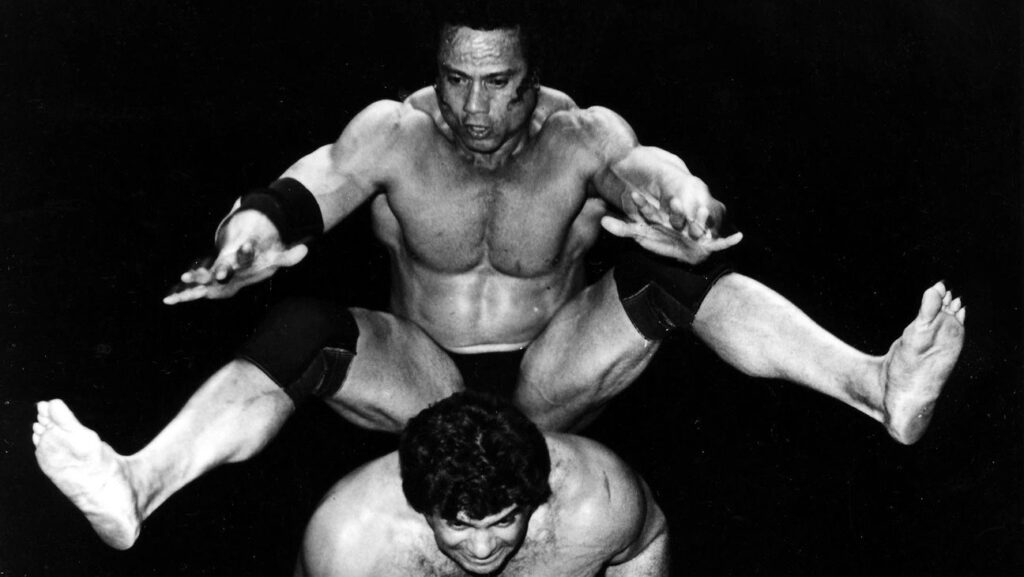
9. Jimmy Snuka and the Death of Nancy Argentino
By the time I became a full-time wrestling mark in the late-’80s, Jimmy Snuka was no longer the phenom he once was. He was still an exciting and intense entertainer, but, to me, he didn’t hold my attention like others of the era did. Of course, being a little kid who ate up everything I was told by Jack Tunney and Sean Mooney, there was no way for me to know about the very dark episode from Snuka’s past that resulted in the death of his girlfriend, Nancy Argentino.
Unfolding like a classic murder mystery, “Jimmy Snuka and the Death of Nancy Argentino” does not paint a very nice picture of Snuka or his case, nor should it. The circumstances surrounding Argentino’s 1983 death are suspect at best, and that it took so many years for anyone to take the allegations against Snuka seriously seems like a huge miscarriage of justice. Further, the fact that he was still regularly wrestling in front of throngs of adoring fans (including children) well into the ‘90s without a serious investigation into his role in the death of Argentino seems callous and irresponsible. (He was even inducted into the WWF Hall of Fame in 1996.)
However, the case remained open. Charges were eventually brought against Snuka in 2015 (32 years later), but by then he was in poor health and was declared mentally unfit to stand trial. Did Snuka kill Nancy Argentino? Was there a cover-up by the police, the WWF, and others? “Jimmy Snuka and the Death of Nancy Argentino” certainly implies that some or all is possible, even likely.
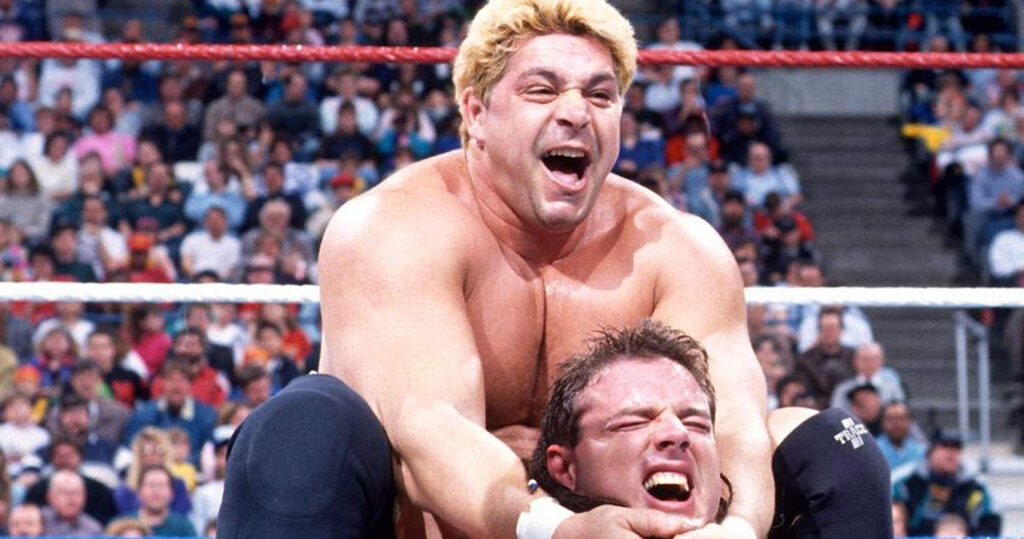
8. The Assassination of Dino Bravo
Watching the WWF in the late-’80s and early-’90s, Dino Bravo was far from my favorite wrestler. Of course, being a little kid, I had no idea the star power he held in his native Montréal. As co-owner and booker for Quebec’s International Wrestling (along with Andre the Giant and others), Dino Bravo was a larger-than-life hero long before I ever saw him as the dastardly heel he became in the WWF. When Vince McMahon began his national push in the mid-80s, International Wrestling became just one of a long list of territories that folded under the pressure. Dino, like many of the other International stars who needed work, was forced to pack up and make the trip to New York.
For a few years, the WWF was financially good for Dino and his family, but the luster would quickly wear off. Dino, now a small cog in a large machine rather than the top star of a hot territory, began to get frustrated with his position in the company. With his work rate suffering, by 1992, Dino found himself out of a job and adrift.
This is where the story takes a dark turn. Aging wrestlers falling from stardom is nothing new in the business, but it isn’t often that you hear of one becoming a low-level gangland figure. Desperate for money to support his family, Dino went to work as an enforcer and debt collector for the largest mafia family in Montréal. Soon after, his body was found in his home with eleven bullets in it.
The case remains unsolved, but it’s believed Dino was involved in some way with contraband cigarette smuggling, backed up by evidence found in his home and an eerie old shoot interview with wrestler Rick Martel. Why he was murdered or by whom may never be known for certain, but life after wrestling all too often takes a turn for the tragic. Dino Bravo’s certainly ranks among the most brutal of them all.
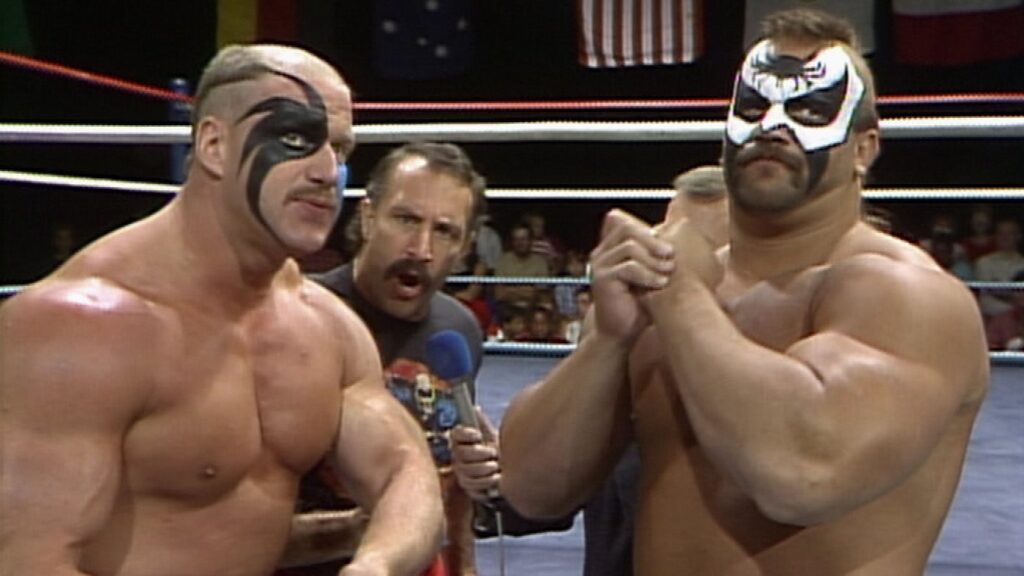
7. The Last Ride of the Road Warriors
No one can deny how badass the Road Warriors were. Their reputation in the wrestling business as tough guys is well-earned and totally legitimate. Like many Minnesota-based wrestlers in the late-1970s (including Mr. Perfect, Barry Darsow, and Rick Rude, among others), Mike Hegstrand (Hawk) and Joe Laurinaitis (Animal) got their break while bouncing at the now-infamous bar Gramma B’s on Minneapolis’s very mean northeast side. After being talked into training as wrestlers by the bartender (who also happened to be famed wrestling trainer and promoter Eddie Sharkey), the pair soon realized their passion for inflicting pain could be channeled into a more suitable and lucrative career.
On a side note, when I was 20 years old, I also met Eddie Sharkey in a Northeast Minneapolis bar. In 1998, Mr. Sharkey sat me down and offered to train me as a wrestler. He said he liked my look and that he thought he could do something with me. After the meeting, he gave me his card and told me to call him. I never did. (I had wild dreams of becoming a wrestler back then, but life took me in another direction.)
Eventually making their way down to Georgia Championship Wrestling and paired with fellow Minnesotan Paul Ellering, the Road Warriors revolutionized tag team wrestling overnight. With their brutal style and post-apocalyptic look, Hawk and Animal mauled over anyone who got in their way, often legitimately injuring their opponents.
But, perhaps predictably, their growing international fame was coupled with overindulgence and self-destruction. Drug abuse, injury, life on the road, and the rigors of fame would eventually tear the Road Warriors apart, but the public nature of their demise, specifically Hawk’s, proves a legendary cautionary tale. “The Last Ride of the Road Warriors” doesn’t cover much ground that the WWE’s 2005 documentary The Life and Death of Wrestling’s Most Dominant Tag Team does, but its presentation and darker tone are a more appropriate approach, on top of being a more in-depth and personal retelling of the team’s saga.
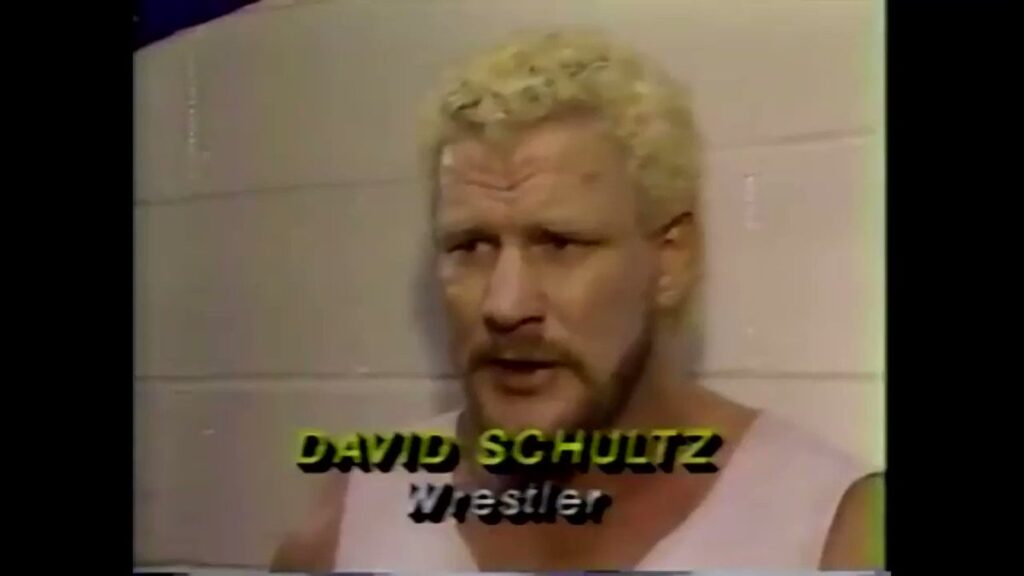
6. David Schultz & The Slap Heard Round the World
Personally, I love stories about the rigid adherence to Kayfabe, and David Schultz has the best one. Trained under the strict code of secrecy and illusion that once protected the pro-wrestling business from outsiders, Schultz was an old-school proponent of Kayfabe even as it began to show its inevitable cracks. When professional TV asshole John Stossel decided to poke holes in wrestling’s violent facade, Schultz took offense and slapped the shit out of him on ABC’s 20/20. Things didn’t go well for “Dr. D” after that.
In 1984, just as Vince McMahon was kicking his national expansion into overdrive, Stossel felt a vindictive compulsion to destroy this growing industry by asking on national television, “Is wrestling fake?” To help in this endeavor, Stossel enlisted the help of a disgruntled former wrestler named Eddie Mansfield, who demonstrated not only how many of the moves were executed in a way that doesn’t hurt your opponent, but also how wrestlers use small razor blades to make themselves bleed. Armed with his footage of Mansfield, Stossel then confronted McMahon, who inexplicably sent Schultz out to meet the TV reporter in his place. The rest is history.
What’s great about this episode is that, even after all these years, Stossel still sounds like a complete asshole, and Schultz, long out of the business, still comes across as one of the world’s greatest heels (something meant as an insult to the former and a compliment to the latter). Schultz’s no-nonsense approach to life, wrestling, and everything is chilling but believable, while Stossel sounds like a childish crybaby. Did Schultz sabotage his career by hitting a reporter in front of cameras? Probably, but it’s difficult to understand just how important Kayfabe once was to the business and how damaging questions like “Is wrestling fake?” were to a payout and thus a livelihood. Breaking Kayfabe was not an option in 1984, and Schultz’s wrestling career paid the price for protecting it.
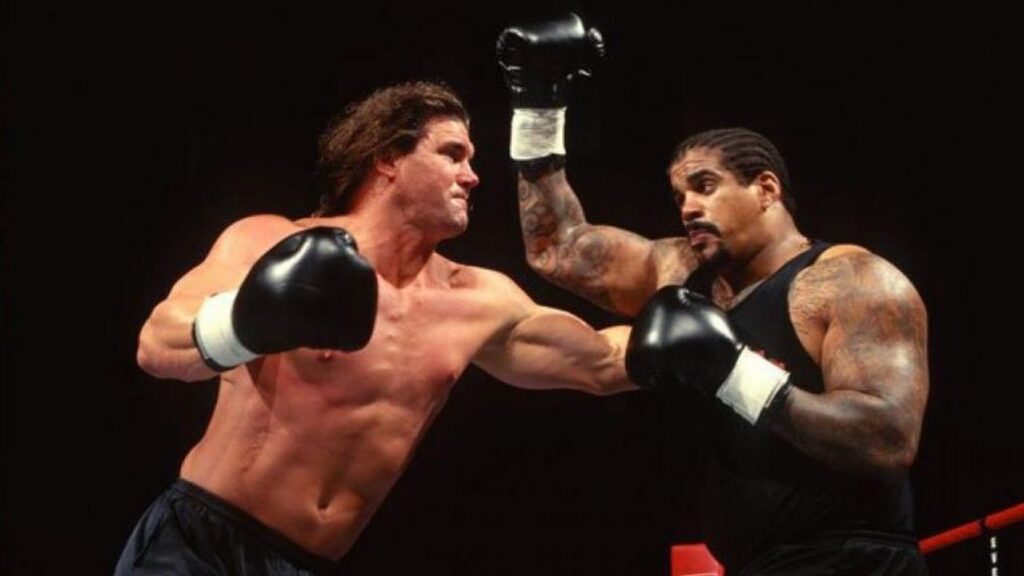
5. The Brawl for All
What a glorious mess the Brawl for All was! And when I say “glorious mess,” I mean arguably the worst idea in the history of professional wrestling. In a nutshell, the Brawl for All was a 16-man tournament to determine who was the biggest badass in the WWF. To do so, controversial writer and booker Vince Russo pitched an idea to Vince McMahon that would pit wrestlers against each other in legitimate boxing matches, with the winner gaining company-wide bragging rights, the promise of a program with Steve Austin, and cash prizes, among other things. The problem was that the whole thing was a total disaster. I remember watching this trainwreck unfold over several weeks on TV, and not only was it embarrassing to watch but also somewhat horrifying. The wrestlers involved were not boxers, and it showed. Legitimate and potentially career-ending injuries were common – a hefty price to pay for an idea that never even came close to getting over with the fans.
On June 29, 1998, the first match of the Brawl for All took place on WWF Monday Night Raw, and it sucked. It was confusing, sloppy, dangerous, and frankly unentertaining, but as Jim Cornette said in the episode, “When you’ve got stupidity on this grand biblical scale, anything is possible.” In the coming months, the Brawl for All continued on Raw, with the winners of each round advancing to compete against other winners, with almost everything going wrong at each turn. Whether it was injuries or the fear of damaged reputations forcing wrestlers out of the tournament, the Brawl for All inexplicably continued until late August with almost no fanfare or heat. In the end, underdog Bart Gunn defeated Bradshaw, but the damage to a number of careers was already done.
As always, whenever you get Vince Russo and Jim Cornette talking about the time they spent together in the WWF, you know things will get heated. Watching Cornette continuously threaten Russo over his role in not just the Brawl for All but for other perceived slights against the business is endlessly entertaining. As a longtime fan, I’ll always side with Cornette, as it was clear to me even then that Russo’s flashy style was a flash in the pan, but boy do I love to see them pick at each other. Jim Ross also supplies some exceptional commentary, as I’ve never seen Good ol’ JR so dismissive of an idea or annoyed with a gimmick. Injuries aside, the tragedy of the story settles on Bart Gunn, whose career was tanked simply because he won the tournament when no one expected him to. And of course, Droz’s participation in the Brawl for All necessitated the paralyzing injury he suffered a year later, which is also discussed. Perhaps most surprising, though, is Russo’s eventual admission that the Brawl for All was, in fact, a bad idea. It’s not often an asshole like that admits when he’s wrong.
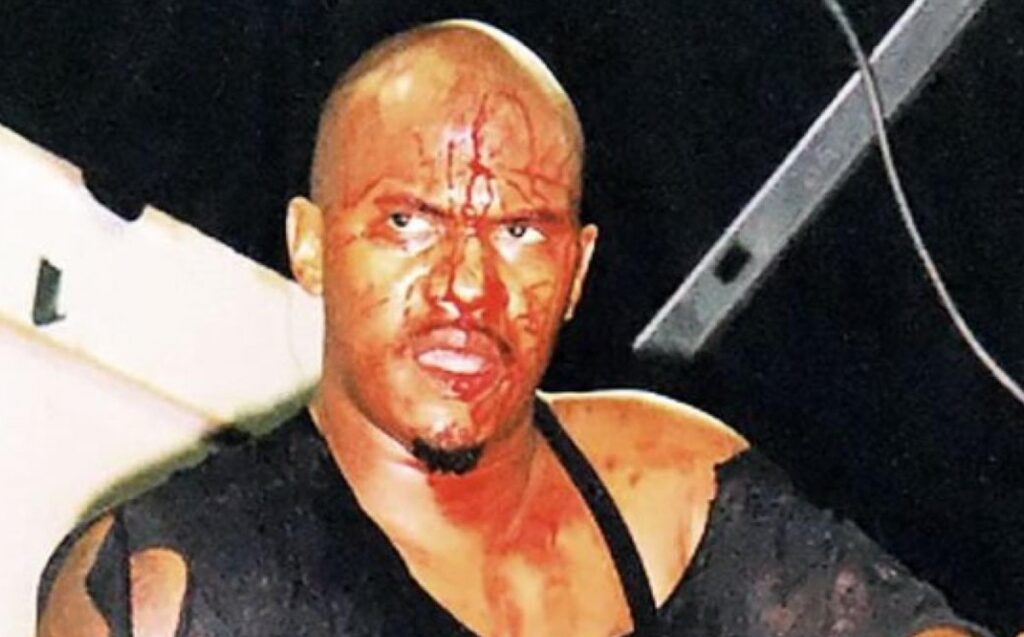
4. The Life and Crimes of New Jack
Full disclosure: I am and always will be a New Jack mark. I’ve known for years how unnecessarily brutal he was to his opponents, how he would completely disregard safety or protective measures in the ring, and his many, many burned bridges, but I don’t care. New Jack helped revitalize my love for wrestling right when I needed it, and there is nothing quite like a mid-’90s Gangstas pop thundering from the ECW arena. I’ll take that over the Road Warriors any day. New Jack was dangerous and intense, but I loved watching him work. I’ve been putting him over for decades and will continue to do so now that he’s gone. But holy shit was he vicious.
What’s possibly more shocking than the liberties he often took with opponents in the ring is how unapologetic he is about his antics. As “The Life and Crimes of New Jack” clearly demonstrates, New Jack is proud of himself for the things he’s done. He’s downright giddy about his bloody exploits. Quite frankly, it’s unnerving to see him extol his own virtues with such a remorseless attitude, but therein lies much of my fascination. While it is certainly impossible to defend the assaults New Jack has committed in and around the ring, I am no less drawn to the psychology behind them and the man who committed them.
But “The Life and Crimes of New Jack” has more than just retellings of Jack’s most famous beatings. His early days in Jim Cornette’s Smokey Mountain Wrestling, the insanely intense racial heat he was able to draw there, and his near-equally crazy partner Musafa are all covered. Watching Jack deliver racially motivated promos to a white southern audience is easily one of the greatest things I’ve ever seen in wrestling. The way he was able to whip crowds into a racial frenzy is nothing short of amazing, both in how easy and enjoyable it was for him to do it and in the courage it took to do so. He legitimately hated racist crackers and reveled in riling them up by using then-current issues like the Rodney King beating, O.J. Simpson, and white people’s irrational fear of black folks and “gangsters” to do so, and holy shit was it spectacular.
The simple fact is that New Jack was not a good person, but I don’t like the thought of a wrestling world in which he hadn’t existed, despite his known drug abuse, the Gyspy Joe beating, the Mass Transit incident (of which the near-legendary and difficult-to-watch footage is partially revealed for the first time), and many, many other such spectacles. I found out just after he died that Jack lived only a few hours from me and that a friend of mine was an acquaintance of his who had stayed in touch with him over the years. Man, I would have loved the opportunity to meet Jack, even if he’d taken it upon himself to stab me or throw me off the roof for no reason other than his bad mood. R.I.P. Jack.
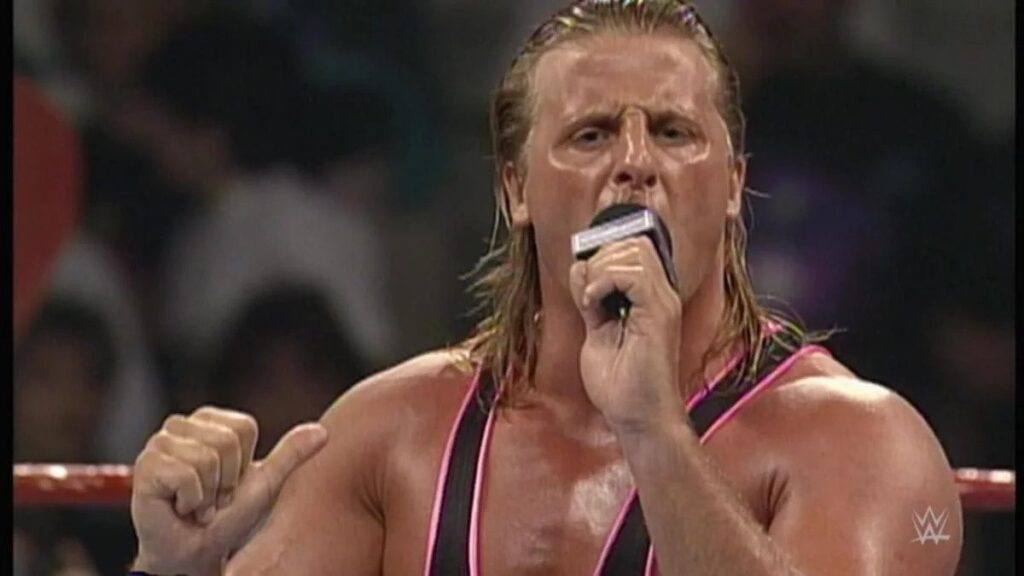
3. The Final Days of Owen Hart
I wasn’t watching live the night Owen Hart was tragically killed in an entrance stunt gone wrong, but I read about it online the next day. I remember feeling like I was in shock. Much like the Benoit incident nearly a decade later, I simply refused to believe any of it could be true. How could something like this ever happen in a wrestling ring? Who was in charge, and who let this happen? I honestly thought the WWF was finished, that they’d be out of business the very next day, and that no one would ever give them another dollar until justice was served. Boy, was I wrong about that.
Owen Hart was a fantastic wrestler. His personality, mic skills, and in-ring work were second to none – hands down, end of story. As a long-time fan of the Hart family dynasty, Owen was far and away my favorite of the bunch, easily superseding his big brother Bret or any of his brother-in-laws. However, by the late-’90s, with the “Attitude Era” in full swing, Owen found himself adrift in the world of sleazy and over-the-top gimmicks. Not wanting to lose one of their best in-ring workers, the WWF had Owen revive The Blue Blazer, an old masked persona he used years before who would often repel from the rafters of the area via harness and rope riggings. On May 23rd, 1999, at the WWF’s Over the Edge pay-per-view in Kansas City, MO, Owen’s rigging failed while in the rafters of the Kemper Arena. He fell to his death in front of a sold-out crowd.
In an extremely controversial move, the pay-per-view continued, with Owen’s death being announced on-air by a visibly upset Jim Ross while a distraught Jerry Lawler looked on. But that isn’t where the story ends. The aftermath of Owen’s death is a mish-mash of blame and denial by those responsible for what went wrong. Owen’s widow, Martha Hart, wasted no time investigating the circumstances of her husband’s death and quickly determined that the riggers had used a flimsy clip meant for sailboats rather than repelling.
Perhaps more disheartening than the negligence involved in Owen’s death was the Hart family’s disapproval of Martha’s search for justice. Not wanting Owen’s wrestling legacy tarnished (and by extension their own reputations), many in the family actively sabotaged Martha’s lawsuits against Vince McMahon and the WWF. Eventually, a settlement was reached, but no real culpability was ever admitted.
It’s because of this apparent lack of remorse that Martha Hart will not allow the WWF (now WWE) to induct Owen into their Hall of Fame, even though everyone, from experts like Ross, Jim Cornette, and Chris Jericho, who tearfully admire Owen throughout the episode, to even the most casual of fans, fully believes he deserves the highest honors possible. But, if I’m being honest, I can’t say that I disagree with her stance.
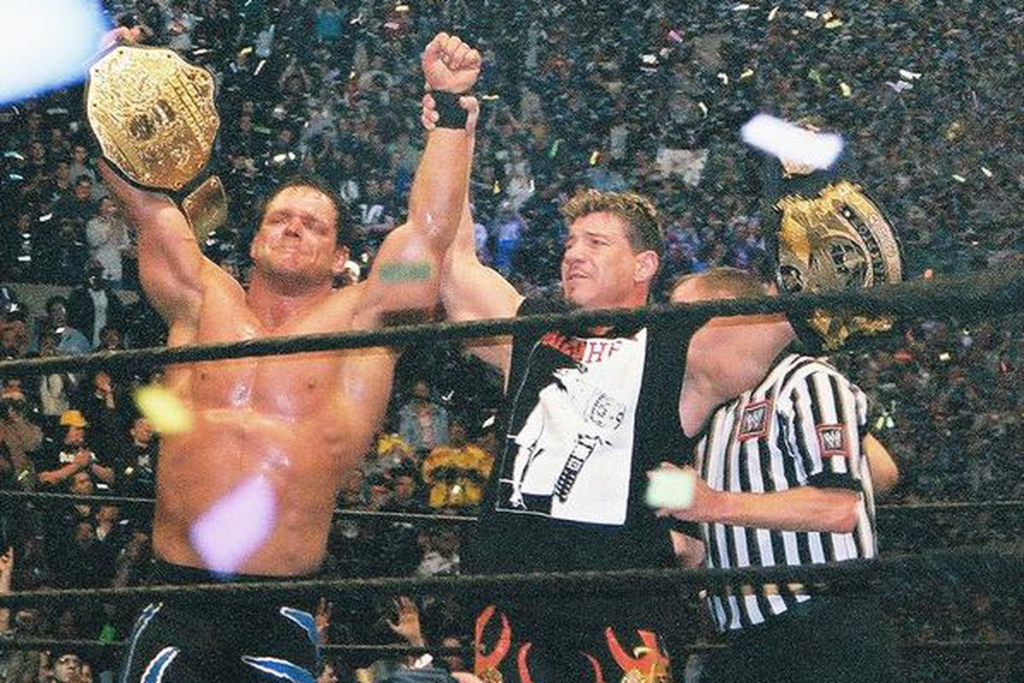
1. & 2. Benoit
There is no way to accurately describe how horrifically grisly this story is. I’ll never forget how heartbroken I was when I learned of Chris Benoit’s death on June 24, 2007, but that emotion pales in comparison to the anger I felt in the coming days as the details of the tragedy started to trickle in. The world had lost one of the greatest wrestlers of all time, but instead of celebrating a storied legacy, we recoiled in horror as we learned of the events that led to not only Benoit’s death but also the deaths of his wife Nancy and their 7-year-old son Daniel.
Part One covers not only Benoit’s rise as a dominant force in the wrestling business but also how wrestlers like Dean Malenko and Eddie Guerrero helped change how wrestling was perceived around the world. These three men, along with a myriad of talent from Mexico, would be the building blocks of WCW’s rise to dominance in the mid-1990s.
Of vital importance to the story is Benoit’s marriage to Nancy Sullivan, a popular valet who went by the names “Fallen Angel” in the ‘80s and “Woman” in the ‘90s. The love triangle between Nancy, Chris, and Nancy’s ex-husband Kevin Sullivan is widely known, but it remains a vital part of how this story would end and is presented here with an extreme amount of sentiment towards Nancy and her family. If you’ve never seen Fallen Angel or Woman in action, do yourself a favor and seek out some of her footage. She was phenomenal.
Also of importance is Benoit’s relationship with fellow wrestler Eddie Guerrero and how Eddie’s own tragic death affected Benoit so deeply that it would change the trajectory of his life forever. Eddie was so beloved within the business that his loss was felt worldwide, but Benoit took it especially hard, so much so that he became erratic and paranoid after his friend was gone. This change in behavior led to worry from friends and family, but no one could possibly have seen what was coming.
As Part Two begins, the specifics of June 24, 2007 slowly begin to take shape with disturbing detail, and frankly, it’s difficult to watch. But, in real time, no one outside of the Fayetteville, Georgia police department or coroner’s office knew what had really transpired. Because of this lack of knowledge, the June 25 episode of Monday Night RAW was canceled and replaced with a three-hour tribute to Benoit and his career. I remember watching that RAW in disbelief, still numb to the fact that one of my favorite workers of all time was gone. By the next day, however, everything had changed dramatically.
It wasn’t until after the Benoit tribute edition of RAW had aired that the real story began to trickle to the media. By Tuesday, June 26, for me and the rest of the world, Chris Benoit’s legacy had changed from one of respect and admiration to one of complete villainy.
In the aftermath, Benoit’s name was essentially scrubbed from anything related to the WWE (although many of his matches are still available to see on the WWE network), and Vince McMahon made a public announcement that he would not be spoken of again. This blackout apparently extended to Benoit and Nancy’s surviving family as well, as the WWE declined to acknowledge them in any way.
Part Two goes on to detail the media frenzy and confusion that followed the events of June 24 and how sensationalism and tragedy fuel the news cycle better than anything else ever could. The term “roid rage” was heard everywhere in the following weeks, but, to my recollection, very little was mentioned about mental health or CTE (chronic traumatic encephalopathy, the result of repeated blows to the head, like the ones wrestlers take all that time).
It wasn’t until much later that anyone correlated Benoit’s behavior with CTE, and when tests were finally run on his remains, it was quickly determined that he had in fact suffered from severe brain trauma caused by his years in the ring, specifically chair shots to the head, and that it had undoubtedly contributed to the tragedy that ended the lives of three people.
The silver lining, if such a thing can exist in this case, is that CTE is now taken very seriously in the wrestling business, and chair shots and other legit blows to the head are all but banned by the major companies. But the facts remain. What happened happened regardless of the circumstances, and I for one, after all these years, still have a hard time reconciling the joy I got from watching Chris Benoit’s matches with the circumstances of his death. And as Part Two points out, I’m not alone in that feeling, as many who knew him admit to struggling with the same attempts at reconciliation as I do.
But what’s also pointed out, and what I wholeheartedly agree with, is that we all make sure to remember how unbelievably great Nancy was at what she did and that she and her son Daniel should be celebrated for everything that they contributed to the world.
